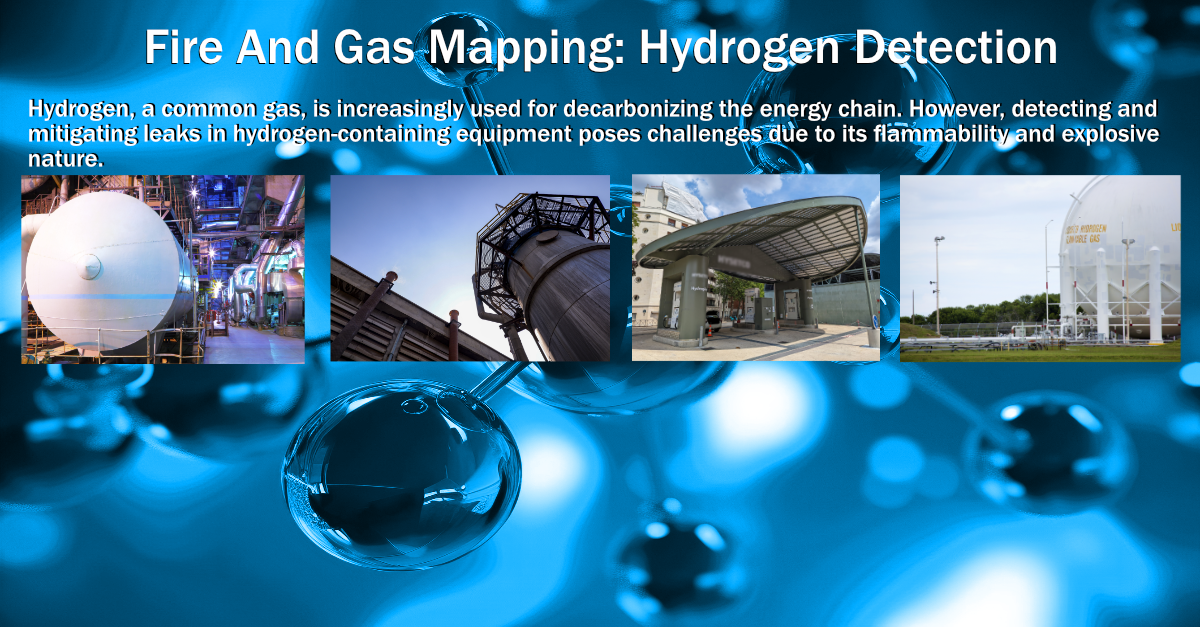Hydrogen, a common gas, is increasingly used for decarbonizing the energy chain. However, detecting and mitigating leaks in hydrogen-containing equipment poses challenges due to its flammability and explosive nature. Kenexis employs heuristics (i.e., rules of thumb) to determine whether gas detection should be used to identify leaks from process equipment. The analysis process involves considering the following factors:
- Is the equipment indoors?
- Does the equipment have a cover that can trap hydrogen?
- Is the area above the equipment regularly occupied by personnel?
- Is the released hydrogen above its autoignition temperature?
- Is the hydrogen released as a cryogenic liquid?
For indoor equipment, gas detection is generally recommended as even small leaks can accumulate and potentially cause explosions if an ignition source is present. In such cases, dispersion modeling through computational fluid dynamics (CFD) is preferred over other dispersion models.
For outdoor equipment under cover, the adequacy of ventilation in the cover needs to be considered. Gas detection is typically recommended in areas where hydrogen gas can accumulate due to insufficient venting.
If outdoor equipment has the potential for upward leaks through grated decking, where personnel could be impacted, gas detection might be considered after a risk analysis determines its necessity.
For hydrogen released above the autoignition temperature, fire detection should be considered for high-frequency leak sources like compressors or exchangers during specific operating modes.
If hydrogen is released as a liquid, gas detection should be considered since gas clouds resulting from liquid spills behave like dense gases and can travel along the ground before dissipating.
If none of the above conditions apply, and the outdoor hydrogen-containing equipment has no objects above it, Kenexis generally does not recommend gas detection as releases would likely dissipate without significant safety consequences.

